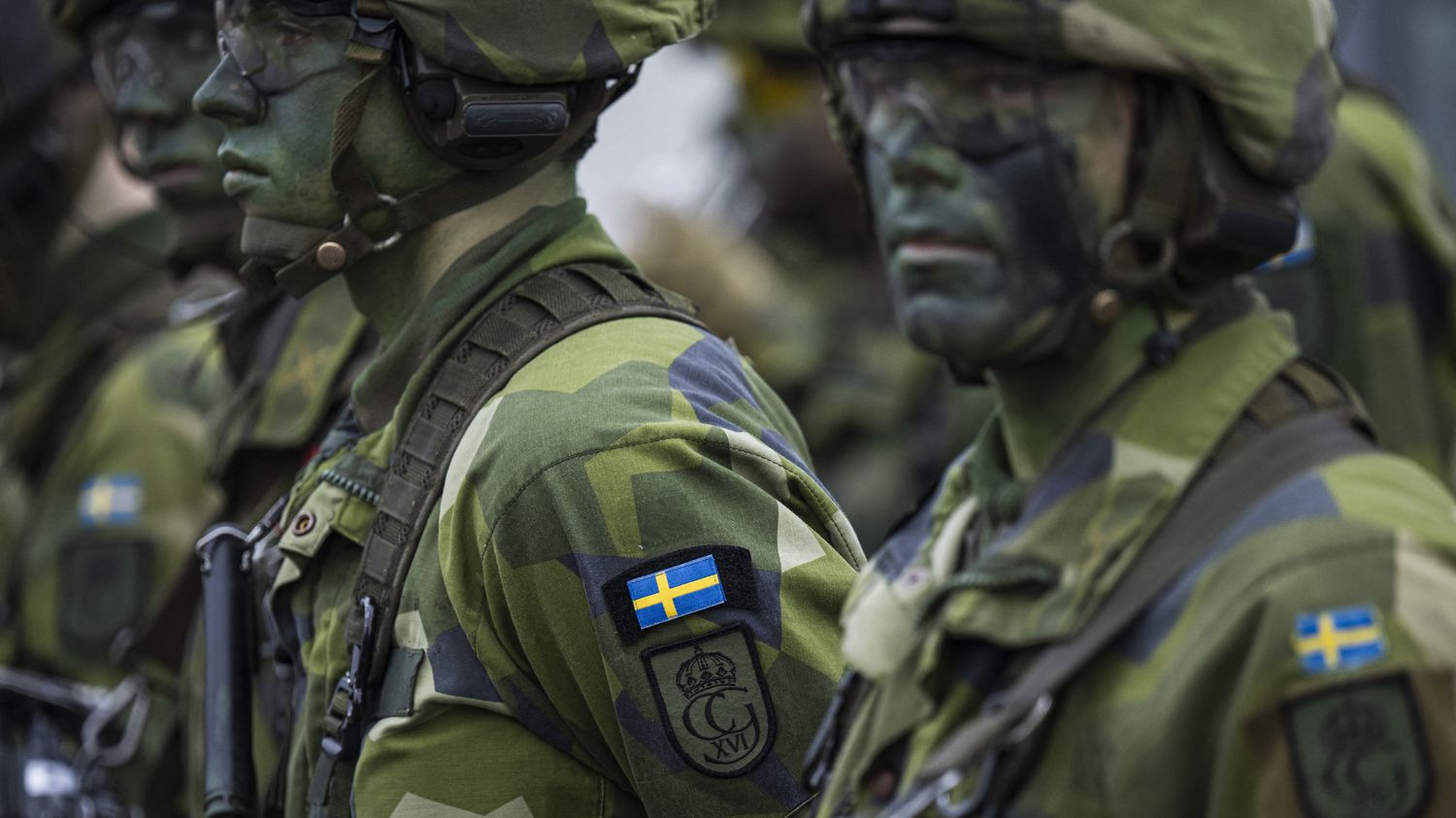Sweden announced its candidacy for NATO at the same time as Finland, in the wake of the Russian offensive in Ukraine. It was approved on Monday by the Hungarian Parliament, which thus removed the last obstacle to its entry into the organization.

Published
Update
Reading time: 5 min

Hungary, which was the last NATO member country not to have yet validated this entry, ratified on Monday February 26 Sweden’s accession to the Atlantic Alliance. After Finland’s entry on April 4, 2023, Sweden will be the 32nd country to become a member of the organization. On a strategic level, this membership above all makes it possible to lock the Baltic Sea, where Russia will now be surrounded by the alliance, which enormously reassures the Baltic countries.
Sweden, a robust ally with increased investments
The Baltic Sea would even become a “NATO sea”, according to some analysts. The integration of Finland and Sweden therefore augurs a security strengthening of the alliance in the area, but also in the Far North. Concretely, this means that the Swedish navy, very important in the Baltic Sea in terms of coastal defense but also intelligence, will be able to be called upon more. Likewise, Swedish ports and airports are strengthening their strategic position.
This new dynamic is positive, in particular, for the Baltic countries. But Sweden also arrives within NATO with a robust military capacity and significant security investments. The country plans to devote at least 2% of its GDP to defense this year, thus achieving the objective set by the allies at the Vilnius summit in 2023. This objective was notably put back on the table by the recent declarations of Donald Trump threatening the alliance’s bad payers.
Officialization of an already active contributor
On a technical level, it is above all a question of confirming an integration that is already well underway. Indeed, Sweden has long participated in numerous NATO working groups. Since his candidacy, joint exercises with the allies have multiplied. In April 2023, Operation Aurora 23 mobilized more than 20,000 soldiers from 14 countries on Swedish territory. In June, American bombers landed in northern Sweden. Stockholm was also regularly invited to the North Atlantic Council, NATO’s decision-making body, and was therefore not really excluded from the decision-making processes. In terms of interoperability, the key word within the alliance, Sweden is a very good student. She is well aware of the issues linked to the proper functioning of her army with NATO.
The only real change is that the country will now officially have a voice at the negotiating table and will benefit from Article 5, i.e. mutual assistance of members in the event of aggression. Also note that Stockholm will now participate in NATO work in the areas of intelligence but also nuclear power. This point constitutes a real turning point, since until now, the country had rather pursued disarmament diplomacy.
A real relief for the Baltic countries
This integration of Sweden was eagerly awaited in the Baltic countries. Both sides of the Baltic Sea are now part of the Alliance and on the Eastern shore they now feel much safer. The Lithuanian parliament ratified the accession of Finland and Sweden on July 20, 2022, that is to say a year and a half ago. During the vote, the Lithuanian Minister of Foreign Affairs said that with this strengthening of the region, they “here was one of the greatest victories against Putin’s Russia”.
Today, this wish has come true and the declarations of all political leaders yesterday expressed relief. “Russia’s attempts to blackmail the region out of NATO have failed”, for example said Kajas Kallas, the Estonian Prime Minister. As we like to say there, the Baltic Sea is now a “NATO Lake”, since all the neighboring countries are part of it, with the exception of Russia. This sea, which separated the two West and East blocks during the Cold War, is now no longer a sea which divides, but which brings together. A new era is therefore dawning in the Baltic Sea. And the key word now is mutual aid and cooperation.
Kilometers of coastline to monitor
Sweden had already announced that once a member, it would send 600 soldiers to Latvia to serve in the NATO multinational battalion. As a reminder, this battalion has been present since 2017 and led by the Canadians. The Latvian Defense Minister said he was looking forward to this arrival. The integration of Sweden and its fleet will allow the Baltic seabed to be much better monitored. We remember the cables that had recently been damaged in the gulf between Finland and Estonia.
The Baltic countries have long kilometers of coastline, which even reaches 3,800 km for Estonia. This country, which has many islands, does not have any submarines. Sweden, on the other hand, has it, with all the knowledge that goes with it. If the Baltics and Sweden already cooperated militarily, the fact of now being all in the same alliance will accelerate the exchange of information, particularly classified information. Security is therefore strengthening in the region. This is reassuring as Russia’s war machine continues to operate at full speed.
